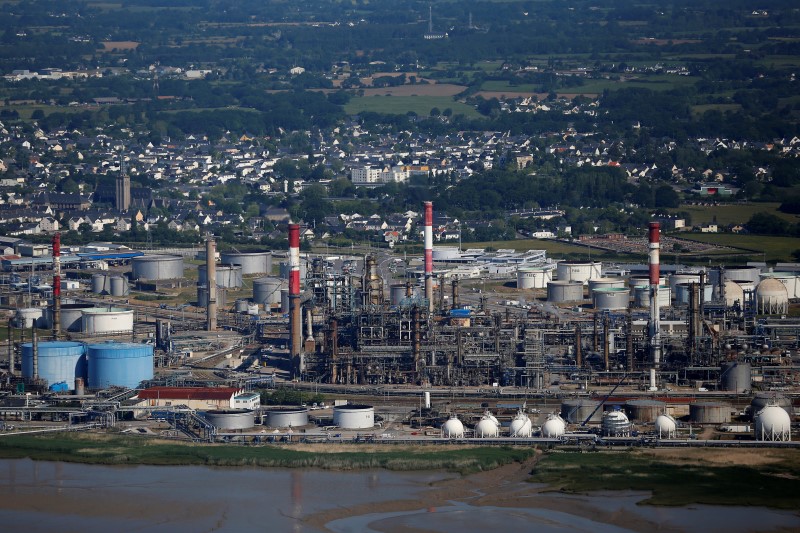(Adds investor and protester reactions, North Dakota dateline)
By Ruthy Munoz and Dave Thompson
WASHINGTON/BISMARCK, North Dakota, Sept 9 (Reuters) - The Obama administration stepped into a dispute on Friday over a planned oil pipeline in North Dakota that has angered Native Americans, appealing for calm while blocking construction on federal land and asking the company behind the project to suspend work nearby.
The move came shortly after U.S. District Judge James Boasberg in Washington rejected a request from Native Americans for a court order to block the project. The government's action reflected the success of growing protests over the proposed $3.7 billion pipeline crossing four states which have sparked a renewal of Native American activism. case has highlighted the need for a serious discussion on whether there should be nationwide reform with respect to considering tribes' views on these types of infrastructure projects," the U.S. Departments of Justice, Army and Interior said in a joint statement released minutes after Boasberg's ruling.
Opposition to the pipeline has drawn support from 200 Native American tribes, as well as from activists and celebrities. Standing Rock Sioux, whose tribal lands are a half-mile south of the proposed route, say the pipeline would desecrate sacred burial and prayer sites, and could leak oil into the Missouri and Cannon Ball rivers, on which the tribe relies for water.
On Friday, the tribe called the Obama administration's intervention "stunning," saying it set the stage for nationwide reform on projects affecting tribal lands.
"Our hearts are full, this an historic day for the Standing Rock Sioux Tribe and for tribes across the nation," tribal chairman Dave Archambault II said in a statement. "Our voices have been heard."
In North Dakota's state capital of Bismarck, hundreds of protesters celebrated the government decision.
"We won! We won!" Bobbi Jean Three Legs, a member of the Cheyenne River Sioux of South Dakota, shouted to the cheering crowd.
Dakota Access, subsidiary of Energy Transfer Partners LP ETP.N that is building the pipeline, declined to comment. But an investor in the pipeline project who asked not to be identified said officials were trying to figure out what to do next.
IMPACT ON JOBS
A coalition of oil, business and labor entities from the states the pipeline would cross said the halt could threaten the jobs of thousands of workers.
"Should the Administration ultimately stop this construction, it would set a horrific precedent," the Midwest Alliance for Infrastructure Now said in a statement. "We hope and trust that the government will base its final decision on sound science and engineering."
Thousands of people have swelled campgrounds near the site of the proposed pipeline, drawing high-profile protesters like Green Party presidential candidate Jill Stein and actress Shailene Woodley.
Last weekend, the protests turned violent as demonstrators breached a wire fence and were confronted by security officers and guard dogs.
After Boasberg said in his ruling that a decision by the U.S. Army Corps of Engineers to fast-track the pipeline project was not illegal, tribal leaders quickly filed a notice of appeal.
At the same time, however, government officials were promising to temporarily halt construction of the pipeline on federally owned land.
In their joint statement, the three departments said they would invite Native American leaders to meetings this fall to discuss how the federal government can better consider the tribes' views and respect their land.
The departments also said they respected protesters' rights to assemble and speak freely, and urged all sides to adhere to principles of nonviolence.
The U.S. Army Corps of Engineers, which owns some of the land where the pipeline was slated to be built and has been involved in the permitting process, said it would halt construction on its property until after officials had re-examined Native American concerns about the pipeline as well as previous projects.
The government said it would not authorize construction on land at Lake Oahe, a focal point of protests.
It called on Dakota Access to halt work on other land, as well. As of late Friday, the company had not said whether it would comply.
When fully connected to existing lines, the 1,100-mile (1,770 km) Dakota Access pipeline would be the first to carry crude oil from the Bakken shale, a vast oil formation in North Dakota, Montana and parts of Canada, directly to the U.S. Gulf.
It would carry oil from just north of land owned by the tribe to Illinois, where it would connect with an existing pipeline.
In his ruling Boasberg said he could not concur with claims by the Standing Rock Sioux that the government erred in approving the Dakota Access pipeline.
<^^^^^^^^^^^^^^^^^^^^^^^^^^^^^^^^^^^^^^^^^^^^^^^^^^^^^^^^^^^ FEATURE-N. Dakota pipeline fight gives spark to Native American activism
Map-Dakota Access Pipeline route
http://tmsnrt.rs/2aF8smG FACTBOX-Protests against pipelines
